We promote watershed management through collaboration with the Powder Basin Watershed Council and other partners, supporting the restoration, improvement, enhancement, and sustainable use of watersheds within the Powder Basin, and providing related educational and engagement opportunities.
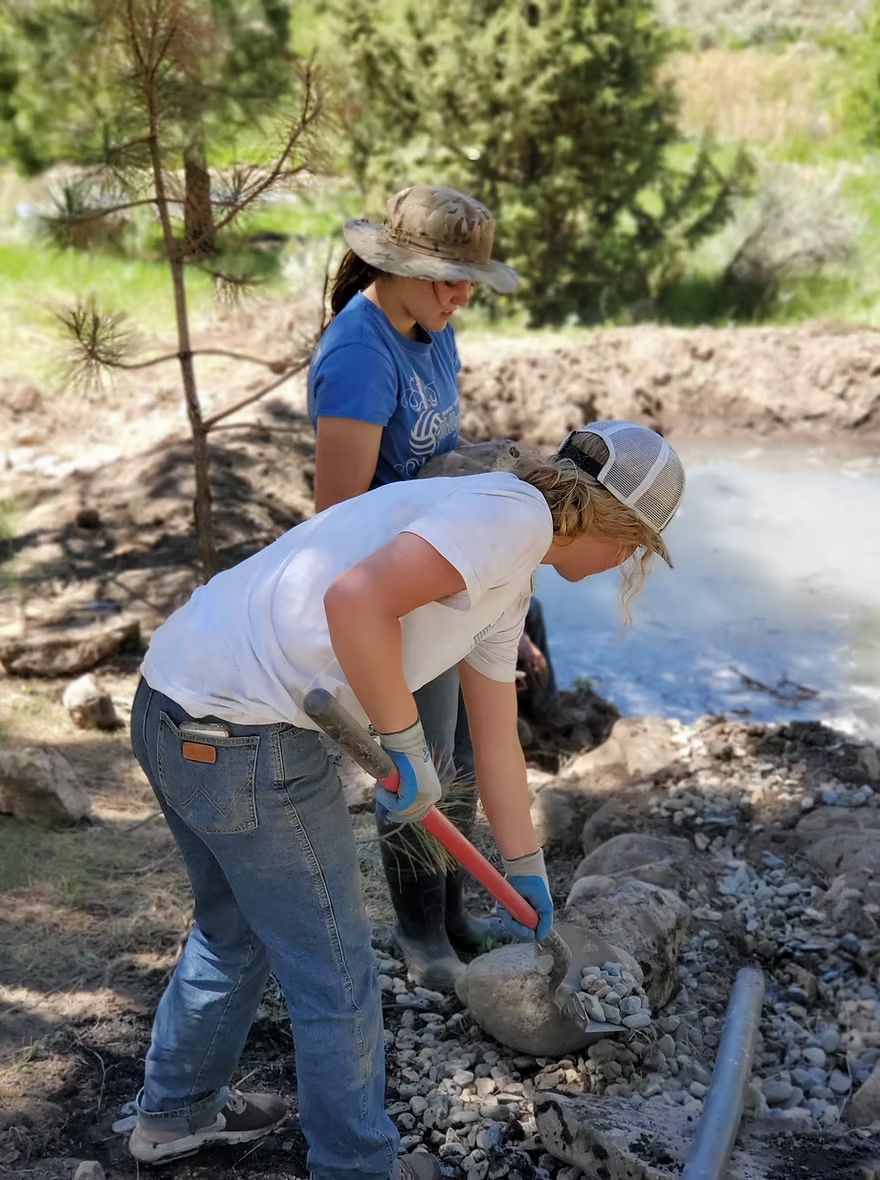
Stream Restoration
Host: Eileen Gyllenberg
For a week, 2021 interns created streambeds to connect springs to streams and ponds and cleared the overcrowded surrounding forested areas. Excess tree material was used to build a maze gate to allow easy access to a fenced area that keeps buffalo at bay. Overall, the land is more resilient to insect pests and wildfires, while supporting greater diversity of wildlife and vegetation.
Camp Creek Beaver Habitat Restoration
Think like a Beaver!
In 2022, 2023, and 2024, interns collaborated on a project with the Powder Basin Watershed Council, multiple state agencies, and federal agencies to restore Camp Creek to its historic potential. Camp Creek was once flush with beavers! Beavers provide various ecosystem benefits, including water and sediment retention, diversified aquatic habitats, stream complexity, floodplain connection, fish and wildlife habitats, and much more. Interns learned about the restoration technique of installing human constructed dams, known as Beaver Dam Analogues, to mimic the ecosystem services provided by beavers. This is an ongoing project, and future interns can look forward to helping construct their beaver dam analogues!
Pictured Below: 2022 Interns Collecting Water Quality Data
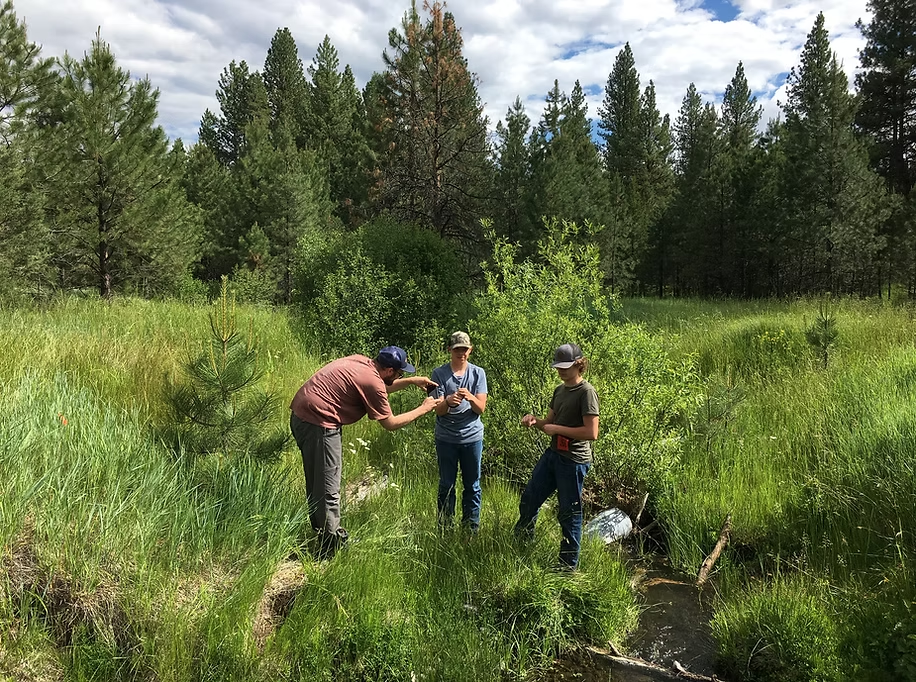
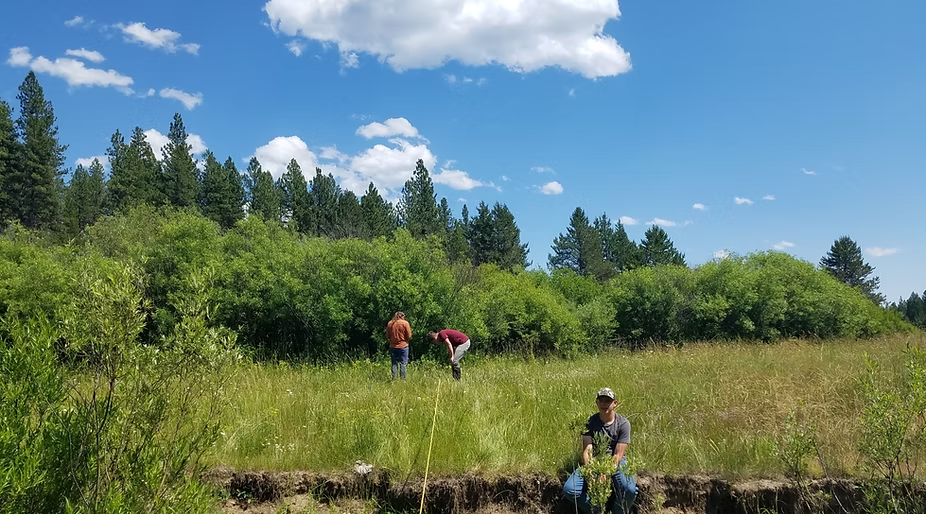
Pictured Below: 2023 Interns Begin Beaver Dam Analogue Construction
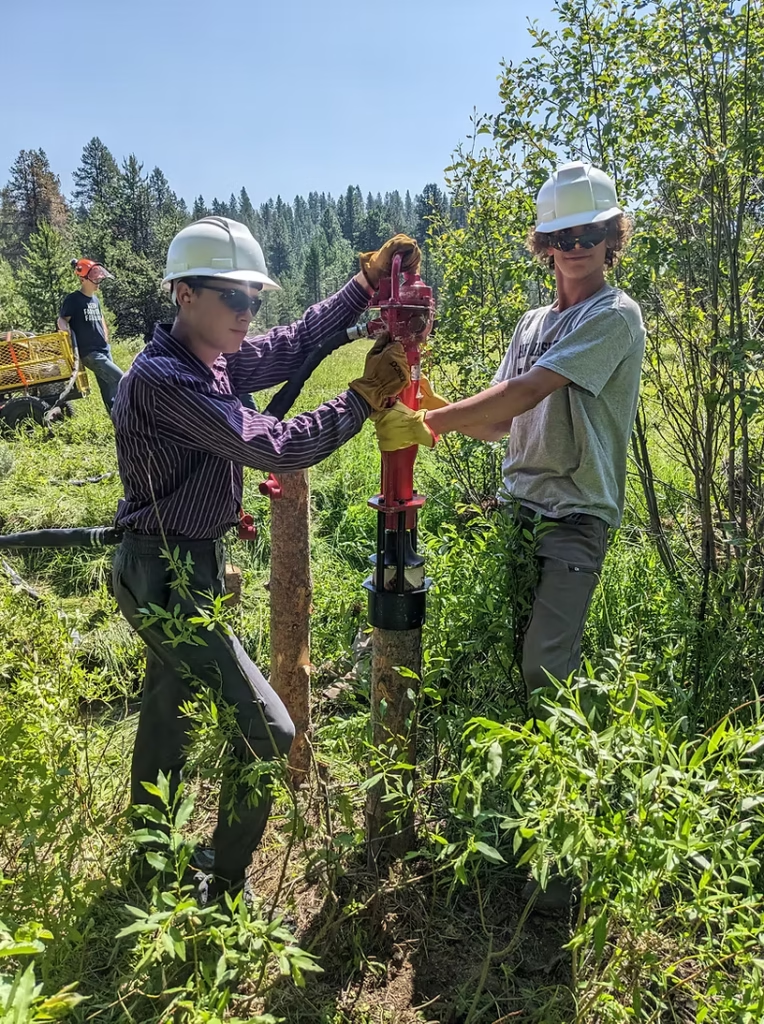
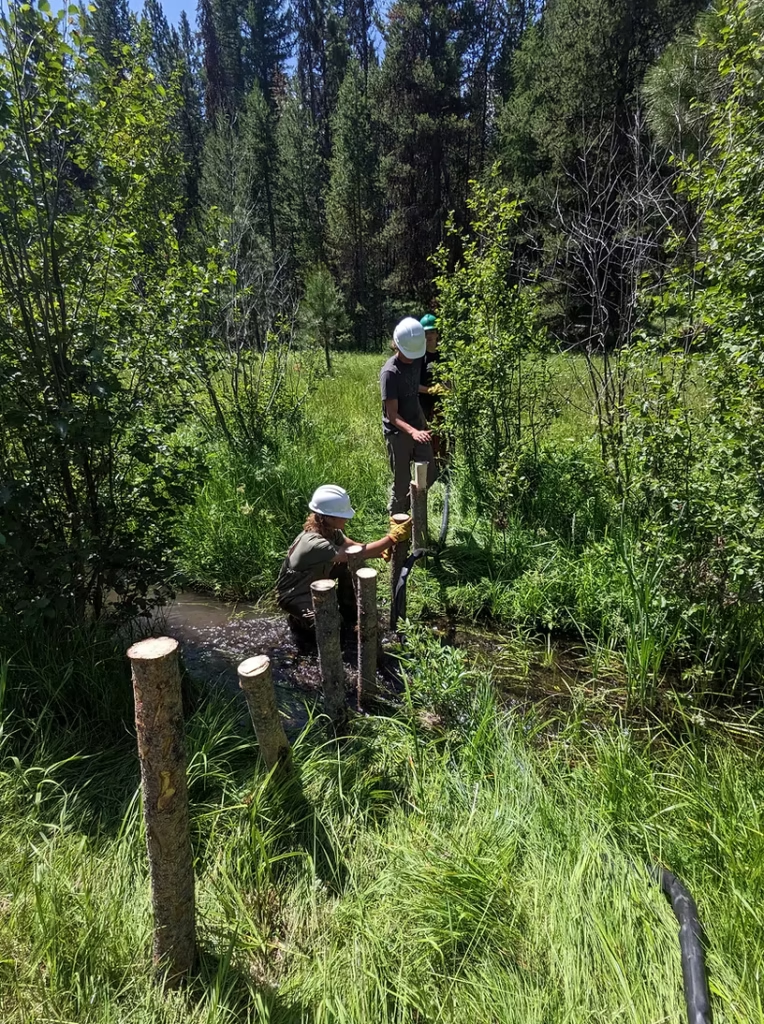
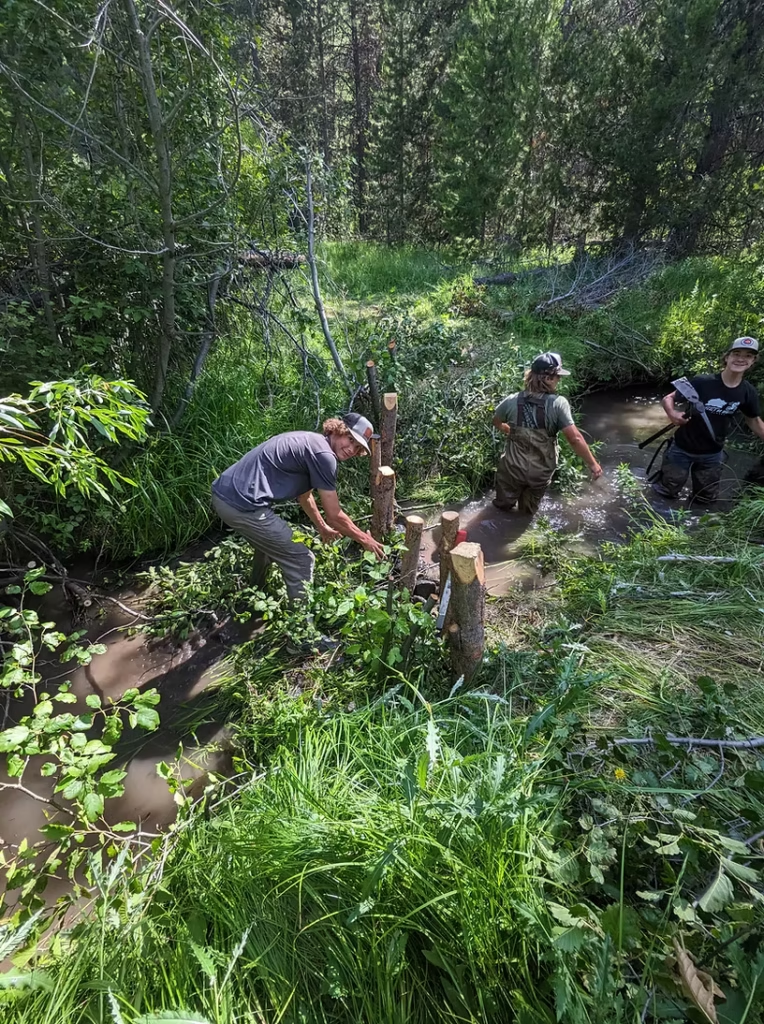
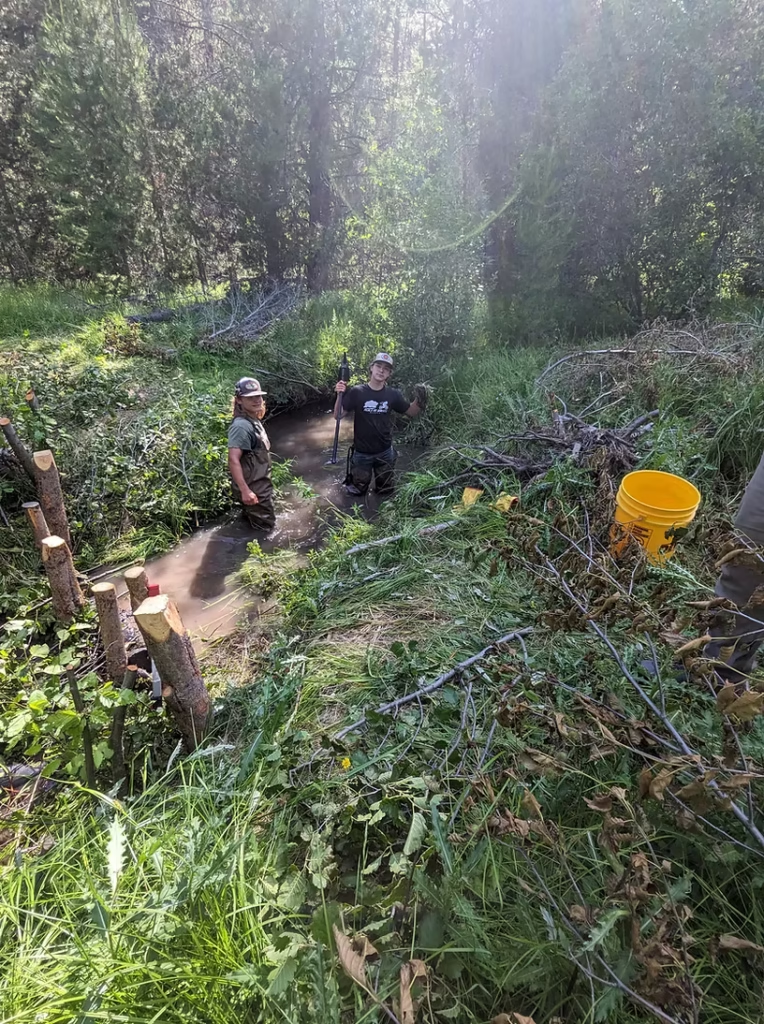
Trout Creek Project
The valley floor of Trout Creek was once an active floodplain with abundant beavers and willows, but historic land use practices resulted in channel incision and widening, causing the stream to be disconnected hydrologically from the valley floor. Degraded hydrologic function limits groundwater recharge, the abundance of riparian vegetation, the longevity of summer stream flows, and system resilience to climate change. This project will use low-tech process-based restoration techniques to restore ecosystem function and to set the stage for beaver recolonization of Trout Creek. During summer 2025, the Northwest Youth Corps and the BRC interns will help construct beaver dam analogues and post-assisted log structures throughout the 2.5-mile project reach. These structures will mimic the natural benefits of beaver dams to restore hydrological processes while improving habitat for beavers already present in the system.
Pictured Below: Pictured below are three snapshots showcasing recent progress on the Trout Creek project.
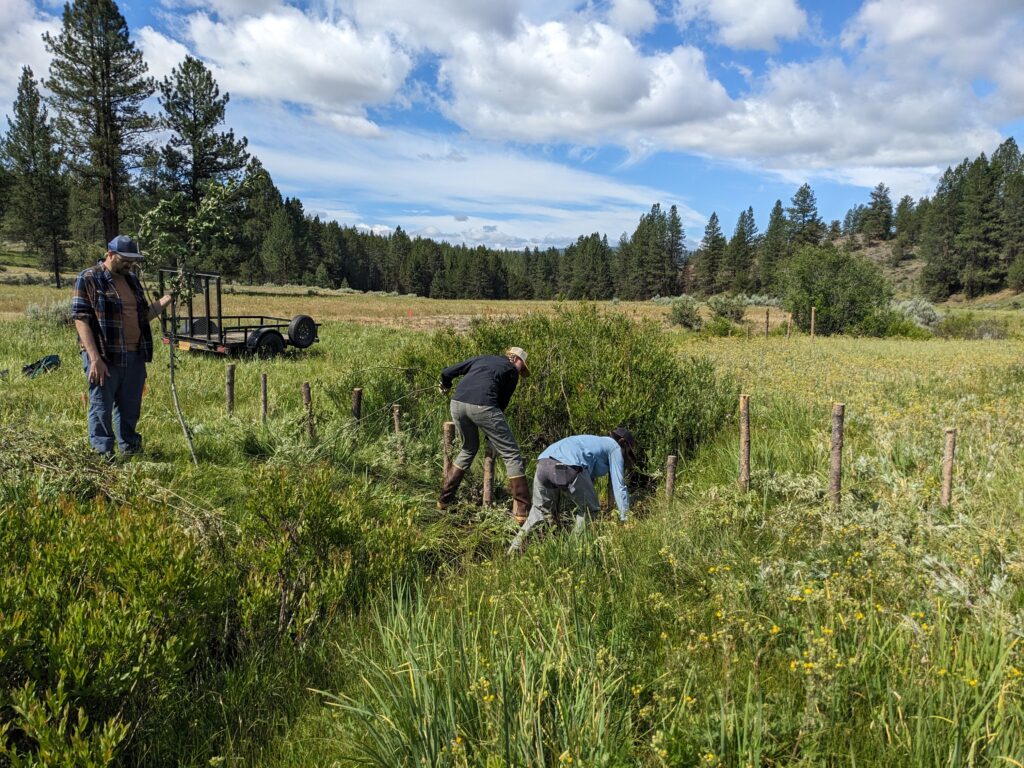
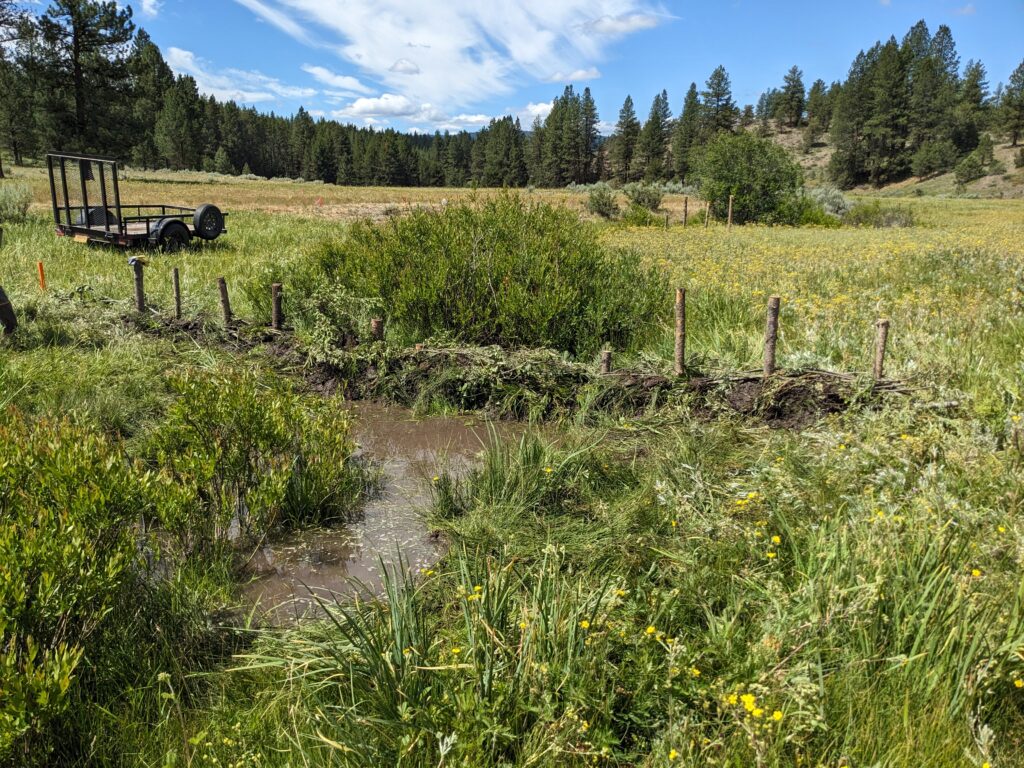
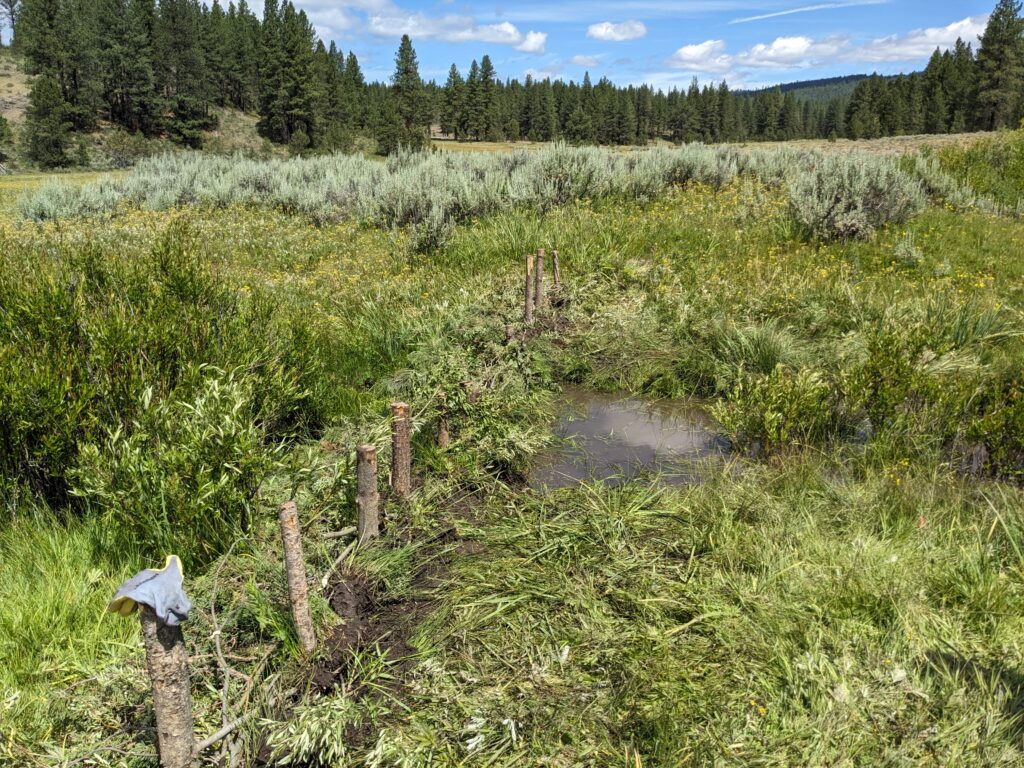
Watershed Sponsors
Baker Resources Coalition
Beaver Damn BBQ and Buck-Pole-Fence BBQ Volunteers
